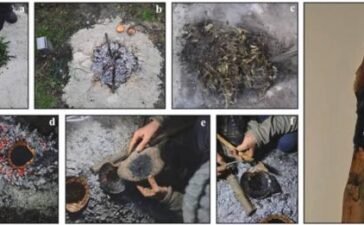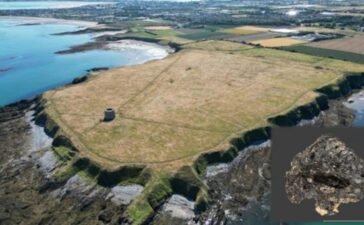A unique discovery has merged Norse legend with modern science. Archaeologists have identified a mysterious skeleton known as the “Well-man,” thought to have been thrown into a well at Sverresborg Castle, Norway, over 800 years ago. Researchers from the Norwegian University of Science and Technology (NTNU) have used advanced DNA techniques to link this skeleton to an event described in the Sverris Saga—an epic recounting the life of King Sverre Sigurdsson.
The Sagas refer to stories about ancient Scandinavian and Germanic history. They talk of early Viking voyages, the battles that took place during the voyages, about migration to Iceland and of feuds between families. They were written in the Old Norse language, mainly in Iceland, between 1100 and 1300 AD and describe the life of certain characters, although are often romanticized, undermining their credibility.
The Sverris Saga details a military raid on Sverresborg Castle near Trondheim in AD 1197, during which an enemy was cast into a well, likely to contaminate the water supply and force inhabitants to surrender. Now, for the first time, scientists have matched a real-life skeleton to an event in this Norse saga.
“This is the first time that a person described in these historical texts has actually been found,” says Professor Michael D. Martin of NTNU’s University Museum in Trondheim.
Uncovering the Mystery of the Well-Man
The story began in 1938, when bones were unearthed from the well at Sverresborg Castle. Limited to visual analysis at the time, researchers only confirmed that the remains were old and male.
But recent studies, including radiocarbon dating and DNA sequencing, have confirmed the skeleton dates back nearly 900 years to the late 12th century, and belonged to a man between 30 and 40 years old at the time of death.

Excavation of the well at Sverresborg Castle. (Norwegian Institute for Cultural Heritage Research/CELL)
Dr. Martin Rene Ellegaard, part of the NTNU team, sequenced a sample of Well-man’s tooth, revealing that he had likely blue eyes and blond or light-brown hair. The genetic analysis also suggests that his ancestors came from Vest-Agder, in southern Norway.
“The text is not absolutely correct—what we have seen is that the reality is much more complex than the text,” says Anna Petersén from the Norwegian Institute of Cultural Heritage Research.
Genetic evidence showed a likely connection between the Well-man and his regional ancestors, thanks to a rich library of modern Norwegians’ DNA.

800-year-old body found in a well at Sverresborg Castle, Norway. (Norwegian Institute for Cultural Heritage Research/CELL)
The Challenges and Promises of Ancient DNA Research
Although DNA analysis brought new details to light, the process was not without obstacles. Removing contamination from those who had handled the bones over the years required grinding part of the tooth into powder, meaning it cannot be used for future tests. Thus, while researchers could confirm the Well-man’s origins and appearance, they couldn’t check for pathogens that may have been present in his system at death. “It was a compromise,” Ellegaard noted, acknowledging the limits this placed on further analysis.
Still, the potential of this technology is tremendous. Professor Martin and his team are enthusiastic about applying these techniques to other historical figures.
“The important Norwegian Saint Olaf is thought to be buried somewhere in Trondheim Cathedral,” Martin mused. If located, Saint Olaf’s remains could also be analyzed for physical and genealogical details, offering a scientific glimpse into the figures of Norse legends.
This research shows how modern science can illuminate ancient history, bringing us closer than ever to the lives of those chronicled in saga and song.
Top image: Well-man skeleton. Source: Åge Hojem NTNU Vitenskapsmuseet/CELL
By Gary Manners






